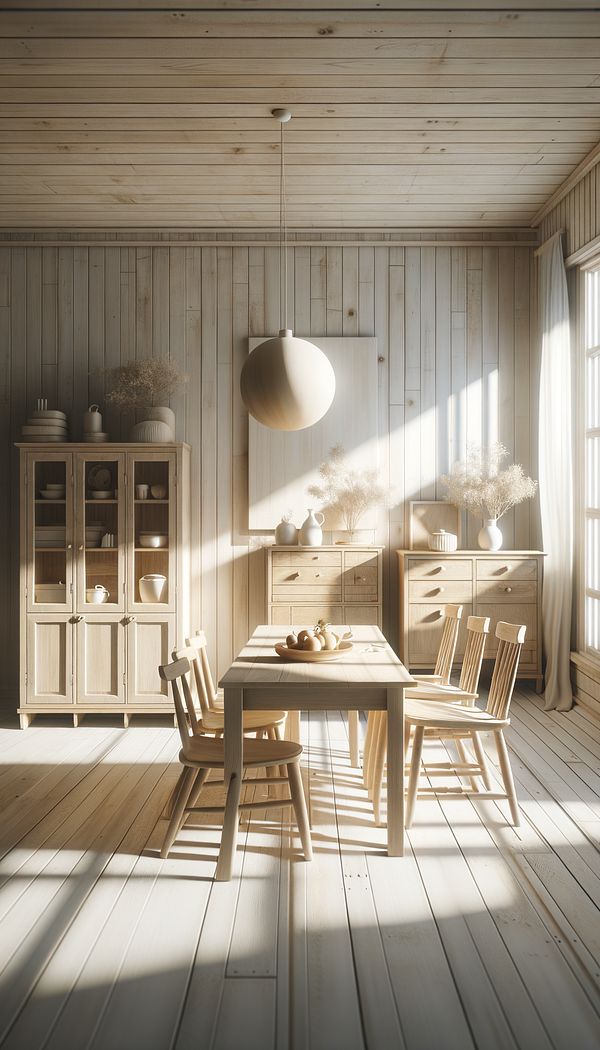What is Whitewashing?
Whitewashing is a painting technique that uses diluted paint to create a translucent finish.
Description
Whitewashing is a decorative technique that has been used for centuries to brighten interiors, furniture, and even exteriors. This process involves diluting paint, traditionally white, with water to achieve a semi-transparent finish that lets the natural texture and grain of the underlying material, such as wood, show through. The result is a softened, aged appearance that adds character and rustic charm to various surfaces.
The technique is not just limited to white paint; it can involve various hues to complement different design aesthetics. It also serves a practical purpose by protecting surfaces from wear and enhancing their durability. Whitewashing is favored in many design styles, including shabby chic, coastal, and farmhouse interiors, where it contributes to creating a light and airy atmosphere. Importantly, the method and amount of dilution can significantly affect the finished look, offering versatility to achieve anything from a barely-there wash to a more pronounced coating.
Whitewashing is relatively straightforward and can be a cost-effective way to update furniture, walls, ceilings, and even floors. It is an excellent option for those looking to add a layer of visual interest without obscuring the natural beauty of materials.
Usage
In interior design, whitewashing is primarily applied to wooden items such as furniture, floors, and architectural features like beams and paneled walls. It's also used on brick walls to lighten their color and texture, adding to the ambiance of spaces like living rooms, kitchens, and bedrooms. Outside the home, whitewashing can transform exterior facades, fences, and garden furniture, providing a way to refresh and protect these surfaces with a hint of color.
FAQs
-
Can you whitewash colors other than white?
Yes, while traditional whitewashing uses white paint, you can also use other light or pastel colors to achieve a similar translucent effect that showcases the underlying material's texture.
-
Is whitewashing suitable for all types of wood?
Whitewashing works best on woods with a prominent grain pattern, such as oak and pine. Woods with a smoother grain may not showcase the desired textured effect as prominently.
-
Can whitewashing be applied to surfaces other than wood?
Yes, in addition to wood, whitewashing can be applied to brick and other porous materials to give them a lighter, textured appearance.
Practical Application
When planning to whitewash, start by cleaning the surface thoroughly and allow it to dry. Mix the paint with water in a 1:1 ratio, or adjust based on the desired opacity. Apply the mixture with a brush, working in sections and wiping away excess with a rag for a more natural look. Always test the technique on a small, inconspicuous area first to ensure satisfaction with the result before committing to the entire project.
-
Design Styles478 articles
-
Furniture Types599 articles
-
Decorative Techniques322 articles
-
Materials & Textiles360 articles
-
Wall Treatments & Finishes157 articles
-
Matte FinishA matte finish is a finish with a non-glossy, flat appearance.
-
PercalePercale refers to a closely woven, plain-weave fabric known for its crisp, smooth texture.
-
CasementCasement refers to a window that is attached to its frame by one or more hinges at the side.
-
Viscoelastic FoamViscoelastic foam is a type of polyurethane foam known for its ability to mold to the body in response to heat and pressure.
-
Channel QuiltChannel quilt is a quilting technique where fabric is sewn into elongated, parallel channels, creating a distinct linear pattern.
